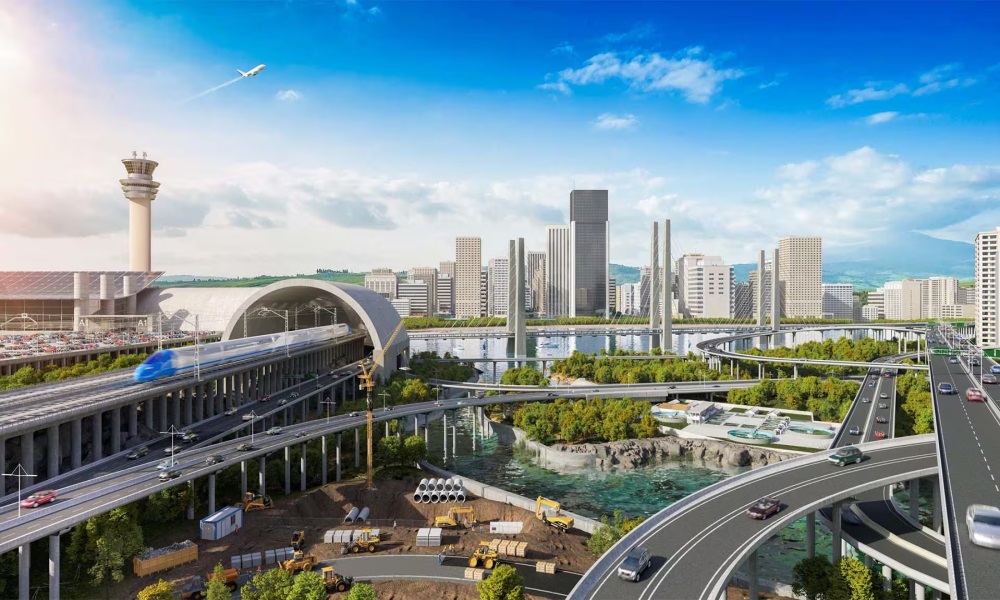Introduction:
In the dynamic world of civil engineering, staying at the forefront of technological advancements is key to ensuring efficient, sustainable, and innovative designs. AutoCAD Civil 3D, a stalwart in the industry, continues to evolve, introducing updates and innovations that redefine the way engineers approach projects. In this exploration, we delve into the future of civil engineering, examining the latest updates in AutoCAD Civil 3D and the potential impact on design workflows, collaboration, and the overall landscape of the industry.
“For those seeking AutoCAD Civil 3D training in Chennai”, CADD Center, with its prominent locations in Vadapalani and Porur, is a highly respected institute renowned for its commitment to delivering quality education in the field of civil engineering. The AutoCAD Civil 3D courses offered at these centers are meticulously designed to cater to the evolving demands of the industry.
The Evolution of AutoCAD Civil 3D:
1. From 2D to 3D: A Paradigm Shift in Design Thinking
As we look towards the future, one of the most notable trends in AutoCAD Civil 3D is the accelerated shift from 2D to 3D design. Traditional methods limited engineers to flat representations of projects, but with the integration of 3D modeling, the software empowers professionals to create more accurate and visually immersive designs. This shift not only enhances the clarity of project visualization but also introduces a new level of precision in understanding how elements interact in three-dimensional space.
2. Building Information Modeling (BIM) Integration
AutoCAD Civil 3D’s compatibility with Building Information Modeling (BIM) is a game-changer in the industry. The future of civil engineering lies in collaborative, data-rich environments, and BIM provides the framework for achieving this vision. With AutoCAD Civil 3D seamlessly integrating with BIM workflows, professionals can collaborate across disciplines, creating a holistic digital representation of infrastructure projects. This integration enhances communication, reduces errors, and streamlines the entire design and construction process.
Innovations Transforming Design Workflows:
3. Parametric Design: Customization for Efficiency
One of the exciting developments in AutoCAD Civil 3D is the emphasis on parametric design. Engineers can now create intelligent, dynamic design elements that adapt to changes in real-time. This not only streamlines the design process but also allows for rapid iterations, fostering innovation and creativity. Parametric design in Civil 3D ensures that modifications are not isolated actions but are instead part of an interconnected and intelligent design system.
4. Automation through Machine Learning and AI
The future of design involves harnessing the power of machine learning and artificial intelligence (AI). AutoCAD Civil 3D is embracing this trend, incorporating automation features that can analyze historical project data to suggest optimal design parameters. This not only accelerates the design process but also assists engineers in making informed decisions based on real-world data. The marriage of AI and Civil 3D holds the promise of unlocking new levels of efficiency and accuracy in civil engineering projects.
Enhancing Collaboration and Communication:
5. Cloud-Based Collaboration: Breaking Down Geographic Barriers
In an era where project stakeholders may be spread across the globe, cloud-based collaboration is becoming increasingly important. AutoCAD Civil 3D’s move towards cloud integration facilitates seamless collaboration among dispersed teams. Real-time updates, version control, and shared access to project data enable engineers, architects, and contractors to work together more efficiently, fostering a truly collaborative environment.
6. Augmented Reality (AR) for Site Visualization
Visualizing a project on-site has traditionally involved blueprints and drawings. AutoCAD Civil 3D is now exploring the realm of augmented reality (AR), allowing professionals to overlay digital designs onto the physical environment. This innovation not only aids in better understanding the spatial context of a project but also facilitates on-site decision-making, leading to increased accuracy and reduced errors during the construction phase.
Addressing Industry Challenges:
7. Sustainability Integration: Green Engineering with Civil 3D
The future of civil engineering is intrinsically linked with sustainability. AutoCAD Civil 3D is adapting to this demand by integrating tools that support green engineering practices. From optimizing stormwater management to designing eco-friendly infrastructure, the software is evolving to meet the challenges posed by climate change and the increasing emphasis on environmentally conscious engineering.
8. Resilience in the Face of Climate Change
Climate change poses significant challenges to infrastructure projects. AutoCAD Civil 3D is at the forefront of addressing these challenges by providing tools to model and analyze the impact of climate-related factors on designs. This includes considerations for rising sea levels, extreme weather events, and other climate-related variables. By incorporating resilience into designs, Civil 3D is helping engineers create infrastructure that can withstand the uncertainties of a changing climate.
The Future in Practice:
9. Real-Time Simulation for Decision-Making
In the future, real-time simulation capabilities will play a crucial role in decision-making. AutoCAD Civil 3D is moving towards providing engineers with the ability to simulate various scenarios, allowing for quick analysis of the impact of design decisions. This not only enhances the design process but also empowers engineers to make informed choices that consider factors such as traffic flow, environmental impact, and construction feasibility.
10. Advanced Project Visualization with Virtual Reality (VR)
Virtual Reality (VR) is emerging as a powerful tool in civil engineering, and AutoCAD Civil 3D is not lagging behind. The software is exploring ways to integrate VR, providing an immersive experience for project stakeholders. Engineers can step into their designs, inspect details, and identify potential issues in a virtual environment. This not only enhances the design review process but also provides a novel way for clients and stakeholders to engage with and understand complex projects.
Conclusion:
As we explore the future of civil engineering through the lens of AutoCAD Civil 3D updates and innovations, it is clear that the industry is on the brink of a transformative era. From the shift towards 3D modeling to the integration of AI and machine learning, the software is evolving to meet the demands of a rapidly changing world. The emphasis on collaboration, sustainability, and resilience positions AutoCAD Civil 3D as a cornerstone in the pursuit of efficient, intelligent, and sustainable infrastructure.
Civil engineers, architects, and designers who embrace these innovations are not merely adapting to change; they are shaping the future of their profession. The landscape of civil engineering is evolving, and with AutoCAD Civil 3D leading the way, the possibilities are limitless. As we navigate this exciting future, one thing is certain – the role of AutoCAD Civil 3D will continue to be instrumental in building the resilient, sustainable, and innovative infrastructure of tomorrow.



